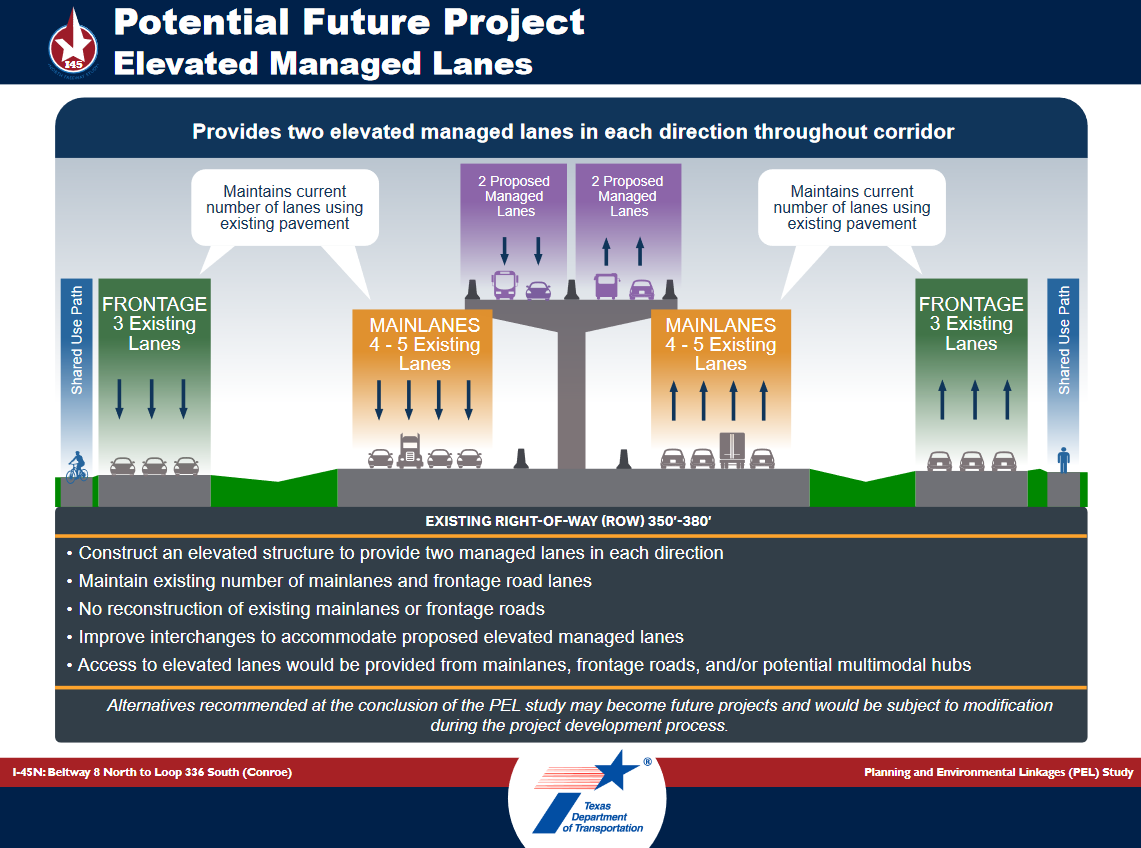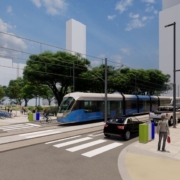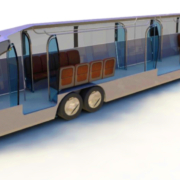Recent TxDOT Study Recommendations Reflect New Reality
In September TxDOT held public meetings for its preferred alternative for future improvements to Interstate 45 North Freeway from Beltway 8 to Loop 336 (south) in Conroe, and in October meetings were held for SH 225 and the East Loop.
Both studies recommended the addition of 4 elevated lanes (2 each way) to these freeways, with minimal or negligible right-of-way acquisition.
This can be interpreted as a new reality that it is no longer politically feasible to acquire right-of-way for freeway improvements in the Houston area. Of course, right-of-way acquisition for NHHIP was the main reason for the controversy which resulted in a two-year pause on the project, and then a revised schedule which delays completion to 2042.
Opposition to right-of-way acquisition is a tactic used by anti-highway activists to block freeway improvements. Of course TxDOT can go up with elevated lanes, which is the recommendation for the corridors of these studies. But this introduces complications.
Complications with Elevated Lanes
The first complication is cost. Elevated lanes are very expensive. There are two elevated lanes projects in progress on I-35 in San Antonio. The I-35 NEX Central project, awarded in March 2021, adds six elevated lanes to a 9.5 mile section in northeast San Antonio. The low bid was $1.515 million, or $159 million per mile. Highway construction costs have increased around 56% since March 2021, and the estimated inflation-adjusted cost is around $248 million per mile. The NEX South project, awarded in May 2023, adds six elevated lanes to a 4 mile section for $700 million, or $175 million per mile with an inflation-adjusted value of $186 million per mile. For comparison, complete reconstruction and expansion of the Gulf Freeway between NASA 1 and Galveston currently in progress costs around $60 million per mile, although it would cost more (up to $90 million per mile) when adjusted for recent inflation.
Using the $186 million value from this year and adjusting for fewer lanes in the Houston recommendation, we can expect elevated lanes to cost at least $125 million per mile and probably around $150 million per mile. When costs are high, it takes longer to get funding, and it’s possible that full funding may never become available if construction costs become too high.
The second complication is access to elevated lanes. Access points to elevated lanes are more widely spaced than managed lanes at ground level. For example, the I-45 study recommends access at Beltway 8 and FM 2920, a distance of 10 miles without any entrances or exits (except for a connector to the Kuykendahl Park & Ride near Beltway 8, which would mainly serve transit vehicles). Long elevated structures also make emergency services access more difficult and complicated. In the case of SH 225, many trucks are making pickups and deliveries in the area, so many would not be able to use elevated lanes.
Read the rest of this piece on Houston Strategies.
Erik (Oscar) Slotboom is the author of Dallas-Fort Worth Freeways, Texas-Sized Ambition. Learn more and view the book here. Find more information about Oscar at Houston Freeways.com.









